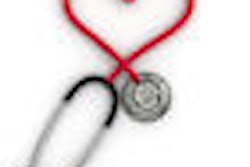
One woman couldn't bear to have a light shone in her eyes because it reminded her of what her captors did whenever they let her out of the box they kept her imprisoned in. And a man whose captors bashed out his front teeth with a rifle butt was reminded of the beating every time he took out his partial denture.
— Steven Resnick, D.D.S., co-director,
Program for Survivors of Torture
These are just two of the more than 300 victims of torture and post-traumatic stress disorder who have been treated as part of a program at the New York University College of Dentistry. Launched in fall 2008 as the first of its kind in the U.S., the Program for Survivors of Torture offers free dental services to survivors of torture and war traumas from more than 80 countries. Survivors of Torture, International in San Diego, CA, also offers similar services.
It is a companion to a Bellevue Hospital program that provides medical care, mental healthcare, social services, and legal services to torture and war trauma victims and their families.
The student dentists -- trained by social workers, psychologists, translators, and immigration lawyers -- treat up to 25 patients during the yearlong program.
"The goal is to give back to patients the dignity which has been taken," said Steven Resnick, D.D.S., a clinical assistant professor at the dental college and co-director of the program. Many of those tortured were college-educated writers and scholars, he noted.
For some patients it is just a matter of signing consent forms, which many refuse to do because it is a bitter reminder of the confessions they were forced to sign in the past, Dr. Resnick said. But most have endured beatings, and many were burned or subjected to sleep deprivation. Others were raped or saw their families murdered in front of them, he said.
Unique challenges
The challenges and obstacles when treating these patients are wide-ranging.
Survivors of waterboarding are often bothered by the suction hose in the dental operatory, so they are allowed to hold it themselves to maintain control. Dentists must also reconsider machines that give off a burning smell, which can remind some of being scorched with lit cigarettes, and dental masks, which may trigger fears of suffocation.
Malavika Prasanna, one of a dozen students in the program, treated a 19-year-old woman from a Central African country. The patient's aversion to dental lights came as a result of being beaten, sexually assaulted, and held in isolation in a small box, she told DrBicuspid.com.
"She freaked out when I turned the light on because every time she saw it, it triggered her memory of when her captors came to take her out of the box and they shined a light on her," Prasanna said.
The woman had been detained because she is related to a government protester who had been captured and she refused to divulge his whereabouts, Prasanna explained.
To allay her fears, Prasanna used a pen light to do the scaling and root planing needed to treat her bleeding gums. "It was a very simple thing, but it took a while because the patient management was a little challenging," she said. "I had to sit and talk it out with her. Because I'm a woman, she trusted me and knew I wouldn't do anything to harm her."
School officials declined to identify any of the patients treated in the program out of privacy concerns.
Lasting impressions
Dental student Fairy Baxi recalled an African patient who didn't speak English and had been imprisoned for being active in a political reform movement. His front tooth had been knocked out when a guard hit him in the face with a rifle butt. Every time he took out his temporary partial, it reminded him of his torture.
After being held in isolation for extended periods with nothing to drink or eat, he resorted to drinking his own urine to stay hydrated, Baxi added. He also started smoking cigarettes as a way to cope with his ordeal, but lighting up inevitably brought back haunting memories, she said.
"Smoking was his way of dealing with a traumatic experience," she told DrBicuspid.com. "It was more about giving him support so that he could stop."
The man was given a permanent bridge and was able to kick his pack-a-day cigarette habit after only a month of using a nicotine patch and gum, Baxi said.
The experiences leave a lasting impression that the students would not get elsewhere.
"It brings home a part of life you see on TV but that you're not really in touch with," Baxi said. "This made it real, and the patients were really grateful."
Perhaps the most moving story, Dr. Resnick said, was that of a woman who felt attractive to her husband again after getting her teeth fixed -- leading, eventually, to a much-wanted pregnancy.
"The question for these dentists is not just 'how good was this root canal therapy,' but what impact did it have on the patient's life?" he said.
Copyright © 2010 DrBicuspid.com



















